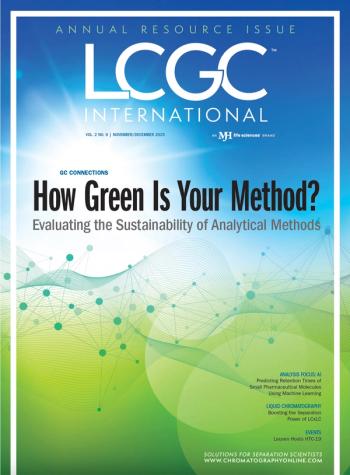
Award Symposium for the LCGC Lifetime Achievement and Emerging Leader Awards
The 2020 winners of the LCGC Lifetime Achievement and Emerging Leader Awards, Daniel W. Armstrong of the University of Texas at Arlington, and Szabolcs Fekete of the University of Geneva, will be honored in this Tuesday afternoon session, in room W183A.
The 2020 winners of the LCGC Lifetime Achievement and Emerging Leader Awards, Daniel W. Armstrong of the University of Texas at Arlington, and Szabolcs Fekete of the University of Geneva, will be honored in this Tuesday afternoon session, in room W183A.
The session will start with the presentation of the Lifetime Achievement Award to Armstrong by session chair Laura Bush, the editorial director of LCGC.
Armstrong’s work and achievements span a broad range of techniques and applications, including high performance liquid chromatography (HPLC), gas chromatography (GC), and supercritical fluid chromatography (SFC). He is particularly known for his seminal work in enantiomeric separations and ionic liquids. In his talk today, titled, “From Micelles, Chiral and Ionic Liquids to Ultrafast and Molecular Rotational Resonance Detection,” he will explore the connections between different areas of his research.
Jared Anderson of Iowa State University will then discuss the design and synthesis of ionic liquids (ILs), magnetic ionic liquids (MILs), and polymeric ionic liquids (PILs) and the use of these materials in a number of applications in multidimensional GC and sample preparation.
The desire for a universal detector is a holy grail in analytical chemistry. But what about combining multiple detectors? In the third talk of this session, Jim Luong of Dow will present his strategy that combines GC with ultraviolet, flame ionization, and mass spectrometry detection for volatile compound analysis.
At 3:40 pm, just after the break, the Emerging Leader Award will be presented to Fekete, who will then give a talk on an approach to achieving nearly infinite selectivity in protein separations by combining multi-isocratic gradients and coupled columns.
Alexandre Goyon of Genentech will close the session with a presentation on the analysis of therapeutic proteins. In particular, he will discuss approaches to enable the coupling of size-exclusion chromatography (SEC) and cation-exchange chromatography (CEX) to mass spectrometry, as well as multi-dimensional LC–MS with automated workflows.
Newsletter
Join the global community of analytical scientists who trust LCGC for insights on the latest techniques, trends, and expert solutions in chromatography.



